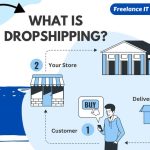
Store design encompasses a variety of elements that collectively contribute to the overall atmosphere, functionality, and appeal of a retail space. Here are some key aspects to consider when designing a store:
- Layout: The layout of a store refers to how the space is organized and divided. It includes factors such as aisle width, placement of displays, checkout counters, and fitting rooms. A well-designed layout should encourage traffic flow and make it easy for customers to navigate the store.
- Visual Merchandising: Visual merchandising involves the presentation of products in an attractive and appealing manner to entice customers and encourage purchases. This includes factors such as product placement, signage, lighting, and display techniques.
- Interior Design: The interior design of a store encompasses the overall look and feel of the space, including color schemes, flooring, wall treatments, and furniture. The design should reflect the brand identity and create a welcoming atmosphere for customers.
- Lighting: Lighting plays a crucial role in setting the mood and highlighting products within a store. Different lighting techniques, such as ambient lighting, accent lighting, and task lighting, can be used to create various effects and draw attention to specific areas or products.
- Fixtures and Displays: Fixtures and displays are used to showcase products effectively while maximizing space. These can include shelving units, display racks, mannequins, and product stands. The choice of fixtures and displays should complement the overall design aesthetic and support the merchandise being sold.
- Technology Integration: With the increasing use of technology in retail, store design may also incorporate elements such as interactive displays, digital signage, self-checkout kiosks, and mobile payment systems. These technologies can enhance the shopping experience and streamline operations.
- Customer Experience: Creating a positive customer experience is essential for driving sales and fostering customer loyalty. This involves factors such as providing excellent customer service, offering amenities like seating areas or refreshment stations, and ensuring a comfortable shopping environment.
- Brand Identity: The store design should align with the brand identity and convey the brand’s values, personality, and image. Consistency in branding across all aspects of the store, from signage to decor, helps to reinforce brand recognition and build customer trust.
- Accessibility: It’s important to consider accessibility when designing a store to ensure that all customers, including those with disabilities, can easily access and navigate the space. This includes features such as wheelchair ramps, wide aisles, and accessible restrooms.
- Flexibility and Adaptability: A well-designed store should be flexible and adaptable to accommodate changes in merchandise, seasonal promotions, and evolving customer preferences. Modular fixtures, movable displays, and versatile layouts can help facilitate easy updates and modifications as needed.



